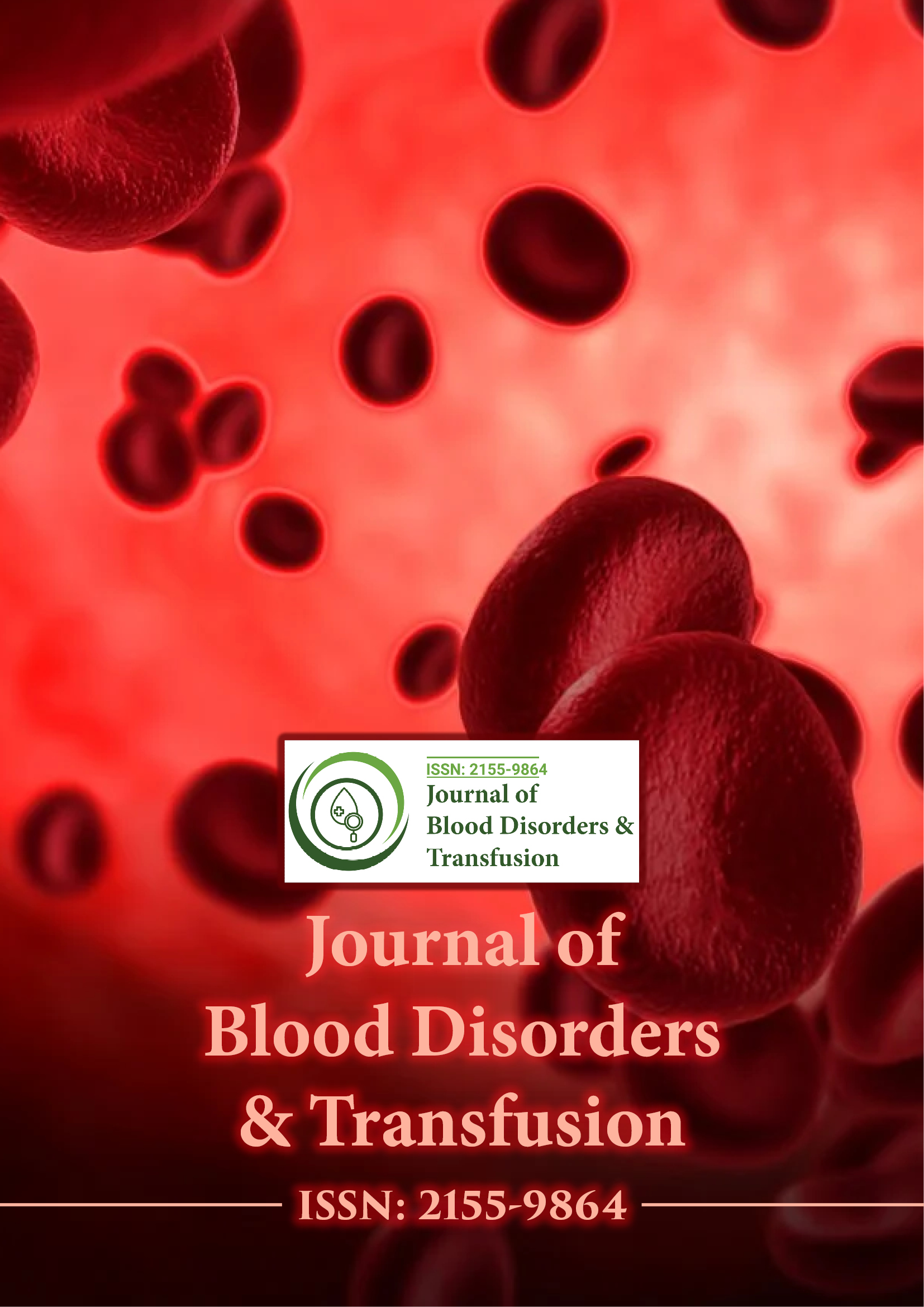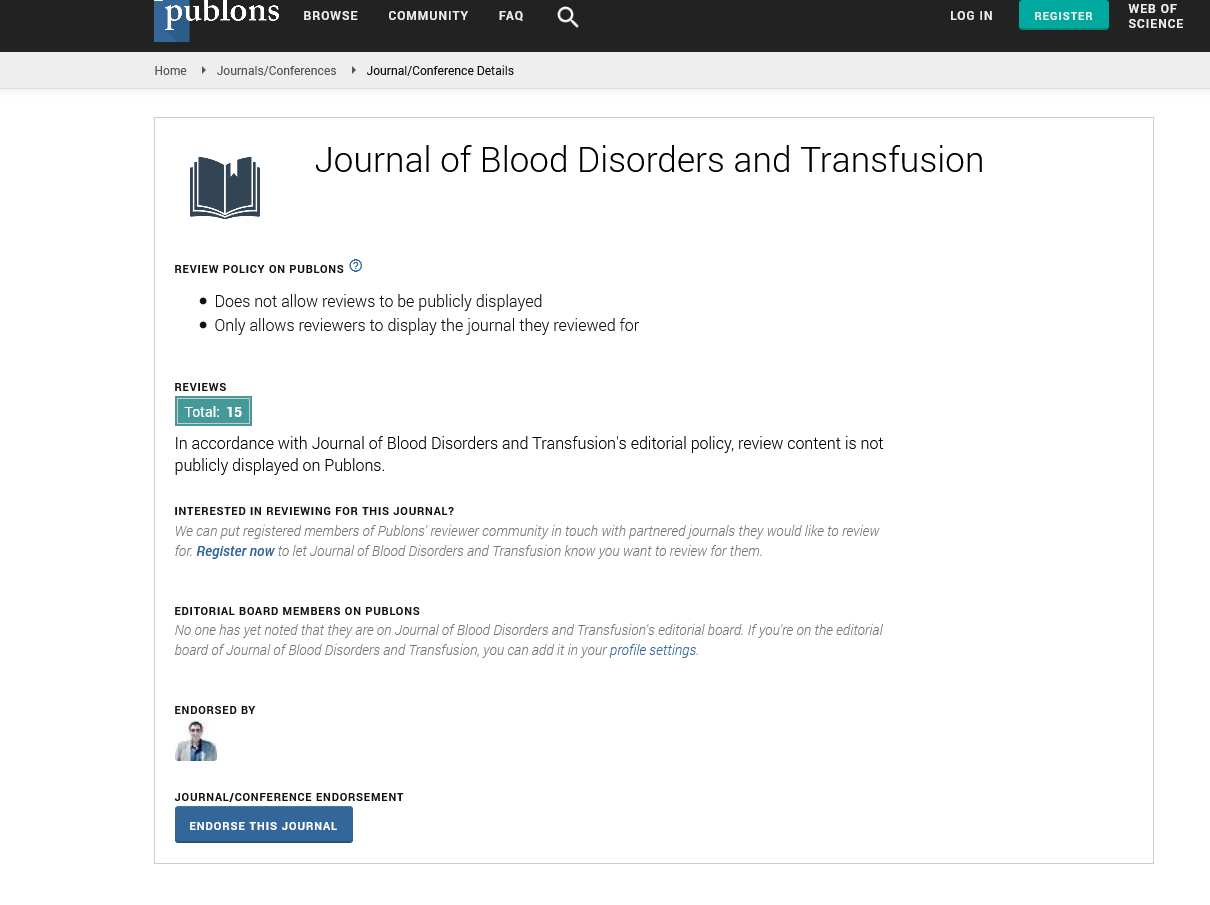Indexed In
- Open J Gate
- Genamics JournalSeek
- JournalTOCs
- Ulrich's Periodicals Directory
- RefSeek
- Hamdard University
- EBSCO A-Z
- OCLC- WorldCat
- Proquest Summons
- Publons
- Geneva Foundation for Medical Education and Research
- Euro Pub
- Google Scholar
Useful Links
Share This Page
Journal Flyer

Open Access Journals
- Agri and Aquaculture
- Biochemistry
- Bioinformatics & Systems Biology
- Business & Management
- Chemistry
- Clinical Sciences
- Engineering
- Food & Nutrition
- General Science
- Genetics & Molecular Biology
- Immunology & Microbiology
- Medical Sciences
- Neuroscience & Psychology
- Nursing & Health Care
- Pharmaceutical Sciences
Commentary - (2022) Volume 13, Issue 2
Deep Vein Thrombosis: Symptoms, Causes and Treatment
Swieton Liane*Received: 07-Feb-2022, Manuscript No. JBDT-22-15490; Editor assigned: 09-Feb-2022, Pre QC No. JBDT-22-15490 (PQ); Reviewed: 21-Feb-2022, QC No. JBDT-22-15490; Revised: 25-Feb-2022, Manuscript No. JBDT-22-15490 (R); Published: 28-Feb-2022, DOI: 10.4172/2155-9864.22.13.490
Description
Deep vein thrombosis (DVT, also known as venous thrombosis) is a thrombosis that occurs in the deep veins of the body. Blood clots can partially or completely block blood flow through veins. Most DVT occurs in the lower legs, thighs, or pelvis, but it can also occur in other parts of the body, such as the arms, brain, intestines, liver, and kidneys. Although the DVT itself is not lifethreatening, it can break blood clots, pass through the bloodstream, and stay in the blood vessels of the lungs (known as pulmonary embolism). This can be life-threatening. Therefore, prompt diagnosis and treatment are required. DVT can also cause leg complications called chronic venous insufficiency or post-thrombosis syndrome. This condition is characterized by blood accumulation, chronic swelling of the lower extremities, increased pressure, increased skin pigmentation or discoloration, and leg ulcers known as venous congestive ulcers. Deep vein thrombosis usually forms in the upper or lower extremities, but can also occur in other parts of the body. Other names associated with this condition may include thromboembolism, post-thrombotic syndrome, and post-phlebitis syndrome. DVT is usually formed on one leg or one arm. Not all people with DVT have symptoms, but the symptoms include:
• Swelling of the leg or arm (sometimes this happens suddenly)
• Pain or tenderness in the leg (may only happen when standing or walking)
• The area of the leg or arm that is swollen or hurts may be warmer than usual
• Skin that is red or discolored
• The veins near the skin’s surface may be larger than normal
People with deep vein thrombosis in the upper limbs or blood clots in the arms may have no symptoms. In this case, the common symptoms are: Neck pain, shoulder pain, swelling of the arms and hands, blue and dark skin tones, pain spreading from the arms to the forearms, weakness of the hands.
Causes of Dvt
The main causes of DVT are venous damage from surgery and trauma, and inflammation from infections and injuries. DVT is caused by blood clots. Blood clots block veins and prevent blood from circulating properly in the body. Coagulation can occur for several reasons. These include:
Injury
Damage to the walls of blood vessels can narrow or block blood flow. As a result, blood clots can form.
Surgery
Blood vessels can be damaged and blood clots can form during surgery. Rest with little or no post-surgery exercise can also increase the risk of developing blood clots.
Reduced mobility or inactivity
Frequent sitting can cause blood to collect in the legs, especially at the bottom. If you cannot move for a long time, blood flow in your legs may slow down. This can lead to the formation of blood clots.
Certain medications
Some medications increase the chances of your blood forming a blood clots.
Treatment
The DVT is a serious condition. If you suspect you have DVT symptoms, consult the doctor immediately or go to the local emergency room. The doctor can check the symptoms. DVT treatment focuses on preventing the growth of blood clots. In addition, treatment helps prevent pulmonary embolism and reduces the risk of further blood clots.
Citation: Liane S (2022) Deep Vein Thrombosis: Symptoms, Causes and Treatment. J Blood Disord Transfus. 13:490.
Copyright: © 2022 Liane S. This is an open-access article distributed under the terms of the Creative Commons Attribution License, which permits unrestricted use, distribution, and reproduction in any medium, provided the original author and source are credited.

